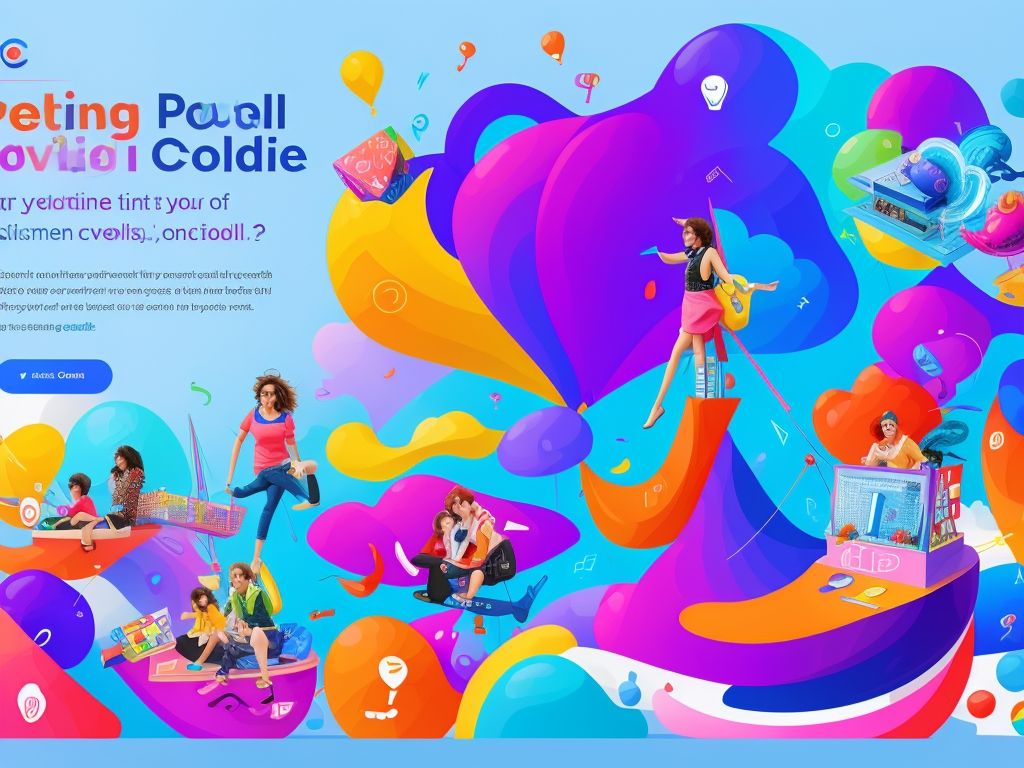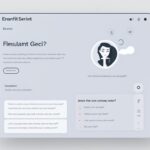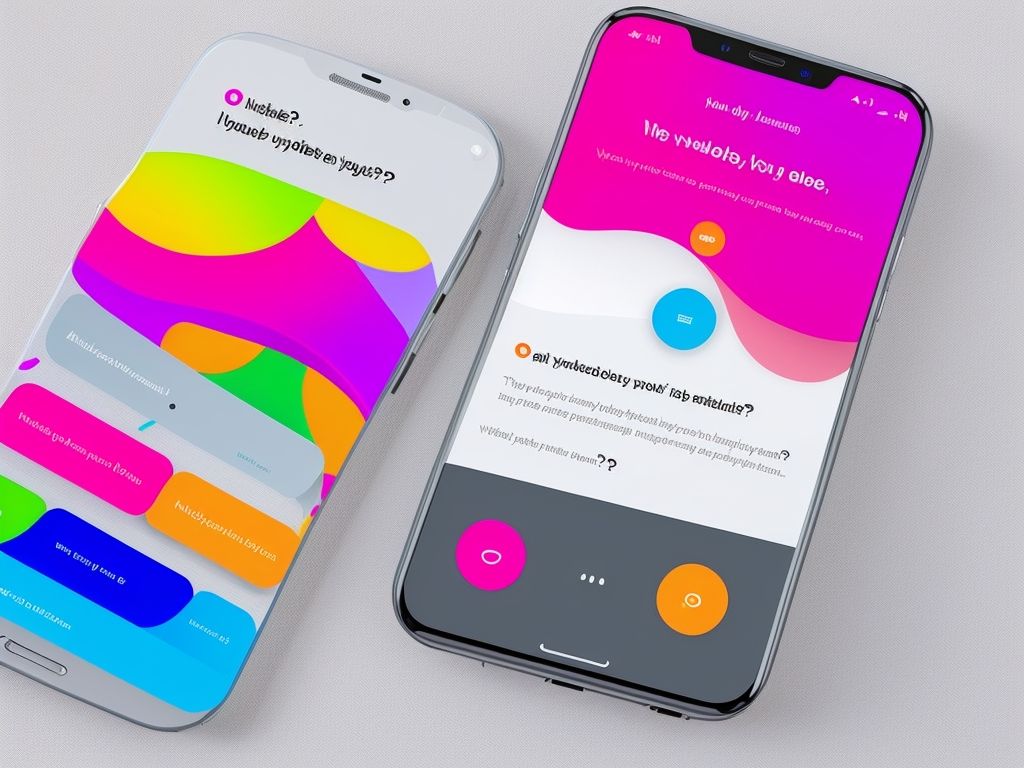A Beginners Guide to Poll Creation
Creating polls can be daunting, especially for beginners. But with the right guidance, anyone can make effective and engaging ones. Here, we’ll explore the fundamentals of poll creation. From picking the perfect questions to making visually appealing polls that draw attention. Let’s jump in and discover the secrets to crafting compelling polls!
- Step one is determining its purpose. Do you want to gather feedback or gauge public opinion? By defining your objectives, you can create a poll that meets your needs.
- Next, carefully choose your questions. Keep them concise and focused. Avoid biased phrasing that confuses people. Instead, use neutral phrasing for unbiased responses.
- Also, use a mix of question types to keep people engaged. Multiple-choice questions are good for quantitative data. Open-ended questions work well for qualitative insights.
Did you know polling dates back centuries? While most associate it with modern technology, its origins can be traced back to ancient Greece and Rome. Gathering public opinion was crucial for political decisions even then.
So, here’s your beginner’s guide to poll creation! With these principles, you’ll be able to make effective polls that give meaningful responses. Consider your objectives, choose appropriate questions, and embrace creative approaches while staying neutral. With practice and refinement, your polls will become powerful tools for gathering invaluable data and insights. Happy polling!
Importance of Poll Creation for Beginners
Poll creation is a must-have skill for beginners. It gives them the chance to get valuable insights and make informed decisions. Here’s why:
- Polls are a great tool to capture attention and get people involved in the decision-making process. This builds loyalty.
- Polls let beginners get feedback quickly and accurately. This helps them avoid guesswork and get real-time data about their audience’s opinions and preferences.
- Through polls, beginners can find out more about their target market. They can ask the right questions and uncover hidden needs, desires, and pain points.
- Polls help beginners prioritize their efforts. They can see what matters most to their audience and use their resources wisely.
- Polls also help beginners monitor trends in their niche. Regular polling allows them to spot shifts in customer preferences and emerging market opportunities.
Plus, polls need to be well-crafted. Questions should be clear and cover all relevant angles. Visual elements (e.g. images or graphs) can help enhance engagement and comprehension.
Step 1: Defining the Purpose of the Poll
Defining the Purpose of the Poll
To create an effective poll, it is essential to define its purpose clearly. This can be achieved through the following steps:
- Identify the Purpose: Determine the specific objective or question that the poll aims to address. Ensure that it is precise and aligned with the desired outcome.
- Target Audience: Determine the intended audience for the poll. Understanding who will be responding to the poll helps in tailoring the questions and selecting the appropriate format.
- Define Parameters: Establish the boundaries and limitations of the poll. Determine the timeframe, sample size, and any other relevant factors that need to be considered.
- Plan for Analysis: Consider how the data collected from the poll will be analyzed and utilized. Define the metrics or criteria that will be used to evaluate responses.
In addition to these steps, it is crucial to ensure that the purpose of the poll is communicated effectively to maximize participation and gather meaningful insights. This can be achieved through clear and concise language, as well as by highlighting the importance of the poll to the target audience.
In a similar tone, a true story comes to mind about a company that created a poll to gather feedback on their new product. By defining the purpose clearly and targeting their specific audience, they received valuable insights that helped them make informed decisions to improve their product and meet customers’ needs.
Why settle for a basic poll topic when you can ask people to choose between cats that fit in teacups or bears that dress in tutus?
Choosing a Relevant Topic
Struggling to pick the right poll topic? Don’t worry, we got you! Here’s how to select the perfect subject that will draw your audience in and yield valuable insights.
Check out the steps in the table below:
| Step | Description |
|---|---|
| Step 1 | Brainstorm potential topics |
| Step 2 | Research to evaluate relevance and interest |
| Step 3 | Narrow down based on feasibility and target audience |
| Step 4 | Choose a topic aligned with objectives and stands out |
Additional considerations: Choose a topic that is current, engaging, and open for discussion. Dig into your target audience’s interests and preferences to find out what they like.
Example: Market researchers had to conduct a poll on consumer purchasing behavior. After brainstorming, they found an interesting idea: exploring the impact of social media influencers on buying decisions. They researched thoroughly to understand if influencers held significant influence.
Their timely and vibrant topic gained attention from participants who wanted to share their opinions. This story shows how choosing a relevant topic can make or break your poll’s success.
Final words: Be innovative, stay informed, and connect with your audience through an engaging topic that sparks curiosity and encourages participation.
Identifying the Target Audience
Maximizing poll effectiveness requires accurate target audience recognition. This enables specific targeting and assures collected data is significant and related.
- Demographics: Think of the demographic factors that are related to the poll. These can include age, gender, location, job, and income. Knowing these facts will help adjust questions to the target audience.
- Interests and Preferences: Figure out interests and preferences of the target audience. This can be done by researching markets or studying previous data. Being aware of these things allows you to craft questions that match their interests and make the poll enjoyable.
- Communication Channels: Determine where your target audience hangs out online or offline. Whether it is social media, forums, or physical places, knowing this information will help promote the poll. Selecting suitable communication channels boosts reach and participation rates.
- Feedback from Previous Polls: Look back at old polls to learn who participated and responded positively. Examining this data can give clues about target audience’s preferences and characteristics.
By considering demographics, interests, communication channels, and feedback from past polls, you can identify your target audience better. This makes the polling strategy more effective.
Pro Tip: Don’t trust assumptions – make detailed research to understand target audience needs and behaviors for a highly successful poll.
Step 2: Selecting the Right Poll Creation Tool
Selecting the appropriate tool to create a poll is a crucial step in the process. To assist you in this regard, we present a 3-step guide to help you make an informed decision.
-
- Step 1: Define your requirements
Consider the specific needs of your poll, such as the type of questions, the target audience, and the desired features. This will help you determine the criteria that the poll creation tool must fulfill.
-
- Step 2: Research available options
Thoroughly examine the various poll creation tools available in the market. Look for features like easy usability, customization options, support for different question types, and integration with other platforms. Evaluate their compatibility with your requirements.
-
- Step 3: Select the most suitable tool
Based on your research, choose the poll creation tool that best matches your needs. Take into account factors like cost, user reviews, and any additional features or benefits offered by the tool.
It is essential to consider the unique details of each tool to ensure a successful poll creation process. Keep in mind that the selected tool should align with your requirements for engaging and effective polling.
A real-life example that highlights the importance of choosing the right poll creation tool involves a company that organized a survey to gather customer feedback. The company initially used a tool that lacked customization options and resulted in a limited response rate. After switching to a different tool with more features, they saw a significant increase in participant engagement and valuable insights.
By following these guidelines, you can confidently select the most suitable poll creation tool and create impactful polls for your specific needs. From basic beginner platforms to advanced options, there’s a poll creation platform for everyone because we all deserve the joy of annoying our friends with multiple-choice questions.
Exploring Different Poll Creation Platforms
Have a look at the unique features of various poll creation platforms:
| Platform | Key Features | Pricing |
|---|---|---|
| SurveyMonkey | Intuitive interface, customizable templates, data analysis tools | Free; Premium plans available |
| Typeform | Interactive design, conversational surveys, built-in logic | Free; Paid plans available |
| Google Forms | Simple interface, integration with other Google products, real-time collaboration | Free |
Additionally, explore other alternatives like Doodle for scheduling & event planning polls, and Mentimeter for live interactive polling.
When selecting a platform, think about factors like ease of use, customization capabilities & pricing. Also, align it with your goals & audience requirements.
Make sure to pick the right tool to capture valuable feedback from your target audience. The right poll creation platform can make a great difference in gathering accurate & meaningful insights.
Considering Features and User-Friendliness
Selecting the right poll creation tool can be overwhelming. Let’s look at key elements to help make the decision easier.
See the table for features and user-friendliness:
| Features | User-Friendliness |
|---|---|
| Customizability | Intuitive Interface |
| Variety | Ease of Navigation |
| Analytics | Time-Saving |
| Integration | – |
Now for the details!
Customizability lets you tailor polls to your needs, while variety of question types gives you more options. Analyze data easily with analytics. Lastly, integration with other platforms can improve the user experience.
Choose a tool that meets your requirements. Don’t miss out on opportunities for better engagement and insights!
Step 3: Designing an Effective Poll
Designing an Effective Poll is an essential step in creating a successful survey. To ensure the accuracy and reliability of the data collected, it is important to carefully craft the poll questions and format. Here is a step-by-step guide to help you design an effective poll:
- Define your objective: Clearly outline the purpose of your poll and what specific information you want to gather from respondents. This will guide the design and structure of your questions.
- Choose the right question types: Select question types that align with your objective. Common types include multiple choice, rating scale, open-ended, and Likert scale questions. Each type offers different insights, so choose wisely.
- Keep it concise: Ensure that your poll is not too lengthy. Stick to the most relevant questions to maintain respondent engagement and accuracy. Avoid using complex or confusing language that may lead to biased responses.
- Use clear and precise language: Frame your questions in a way that is easy to understand and interpret. Avoid using jargon or technical terms that may confuse respondents. Be specific and provide clear instructions when necessary.
- Consider the order of questions: Arrange your questions in a logical order, starting with easy and straightforward ones to engage respondents. Group similar questions together and avoid jumping between unrelated topics.
- Test and iterate: Before distributing your poll, test it with a small sample group to identify any issues or improvements. Analyze the results and make necessary adjustments to optimize the effectiveness of your poll.
Remember, designing an effective poll requires careful planning, clarity of purpose, and consideration for the respondents’ experience. By following these steps, you can create a meaningful survey that generates valuable insights.
It is important to note that the effective design of a poll can greatly influence the quality of the data collected and ultimately shape the decision-making process. So take the time to carefully craft your questions and format, and you’ll increase the chances of obtaining accurate and actionable results.
Master the art of simplicity in poll creation, because if your questions could win an Olympic gold medal in confusion, your respondents might just give up and switch to a less perplexing hobby like solving a Rubik’s Cube blindfolded underwater.
Creating Clear and Concise Questions
Crafting clear and concise questions is a must for an effective poll. It makes sure respondents comprehend what is asked and can answer correctly. Here’s a 4-step guide to help you do this:
- Figure out the aim: Make it clear what you want to find out or what choice you need to make by defining the goal of your poll.
- Keep it plain: Don’t use jargon or terms that might confuse respondents. Each question should ask only one thing, so there isn’t any ambiguity.
- Be precise: Give enough information in your questions so that people understand exactly what you are asking. Include appropriate options or say when/where, if needed.
- Pick the best response format: Choose the right response format for each question, such as multiple choice, ranking, rating, or open-ended. This ensures that answers are easy to give and data is collected correctly.
Also, tips to create clear and concise questions include using simple sentence structures, not having biased language, and ordering questions properly. These are helpful because simplicity prevents confusion, impartial language gives honest answers, and logical order improves survey flow.
In conclusion, designing clear and concise questions means figuring out the purpose of your poll, making language simple, being specific, and selecting suitable response formats. Adhering to these tips will make sure your poll successfully collects important data for making smart decisions.
Using Different Question Types
Different question types are essential to developing a successful poll. This enables researchers to get a more extensive and varied range of data, aiding in deeper understanding. Knowing when and how to use the various question types is important to guarantee precise results.
The table below illustrates the various question types, their descriptions, and when to use them:
| Question Type | Description | Usage |
|---|---|---|
| Multiple Choice | Offers respondents a list of predefined options to select from. | Good for collecting data on choices or opinions where there are distinct alternatives. |
| Rating Scale | Asks respondents to rate their opinion or agreement on a scale, usually from 1-5. | Perfect for gauging attitudes, satisfaction levels, or perceptions where intensity is important. |
| Open-Ended | Allows respondents to give free-form text responses, providing more detailed info. | Useful when searching for qualitative insights or unknown perspectives not caught by predefined options. |
In addition, these tips should be kept in mind when using different question types:
- Use a variety of question types: Combining different question types ensures a comprehensive survey that captures qualitative and quantitative data.
- Keep questions concise: Clear and succinct questions reduce confusion and increase response rates.
- Avoid leading questions: Stay neutral in how you phrase questions to get unbiased responses.
- Randomize answer options: Randomizing answer choices stops any unintentional bias brought on by position effects.
- Apply skip logic: Utilize skip logic to modify following questions depending on earlier responses, forming a personalized survey experience.
Diversifying question types and implementing these tips enables researchers to get valuable information that accurately reflects the surveyed audience’s opinions and perspectives.
Adding Visuals or Media (if applicable)
Adding visuals to polls can make them more effective. Images, videos, or other multimedia can help capture people’s attention. Plus, visuals make polls look good and help communicate information quickly and clearly.
Take a look at this example table:
| Visual Type | Purpose | Example |
|---|---|---|
| Infographic | Show complex data |  |
| Video | Show product features | Watch video |
| Image | Create emotion |  |
These visuals help communicate without overwhelming people with words. So, when a company wanted to increase response rates for an employee satisfaction survey, they added visually appealing charts and graphs. It worked! Response rates went up and the company got valuable insights.
Step 4: Distributing the Poll
Distributing a poll efficiently is crucial for obtaining accurate data. Here’s a concise guide on how to distribute the poll:
- Utilize various distribution channels: Share the poll on social media platforms, email newsletters, and relevant online communities.
- Leverage collaboration: Collaborate with influencers or partners who can help promote the poll to their audience.
- Optimize website placement: Embed the poll on your website, preferably in a noticeable location to increase engagement.
- Utilize mailing lists: Send the poll directly to your mailing list subscribers, ensuring they have easy access to participate.
- Consider offline options: If applicable, distribute physical copies of the poll at events or public spaces to reach a wider audience.
- Monitor and remind: Regularly monitor the progress of the poll and send reminders to encourage inactive participants.
Remember, each distribution method plays a vital role in maximizing the reach and participation of your poll.
Choosing the right channels for your poll is like choosing a weapon in a zombie apocalypse – make one wrong move and your message is brain-dead.
Choosing the Right Channels
Choosing the right channels to distribute your poll is key. Use a mix of online and offline platforms that suit your demographic and campaign targets.
For Online Channels, use social media like Facebook, Twitter and Instagram. Utilize the targeting options to reach the right people. Plus, email newsletters and forums related to your poll’s topic can help expand your reach.
Offline Channels such as print ads in newspapers or magazines can reach older demographics who are not so active online. Try local businesses or organizations who can display physical copies of your poll or help spread the word through their networks.
Influencers or thought leaders in your industry are also an option. Partner with them to promote your poll and increase visibility and credibility.
For further boosting the distribution of your poll, think about paid advertising on popular websites or search engines. This strategy ensures your poll gets maximum exposure when relevant searches are made.
Promoting the Poll
Maximize participation in your poll by promoting it effectively. Here are five strategies to boost engagement:
- Social media: Share the poll on Facebook, Twitter, and Instagram. Ask followers to share it with their networks.
- Email marketing: Send targeted emails to subscribers, including a link to the poll. Personalize and highlight the value of participation.
- Work with influencers: Collaborate with influencers in your industry. Their endorsement will enhance credibility and increase participation.
- Join online communities: Join forums and groups where your target audience congregates. Share the poll and engage in related discussions.
- Partner with other businesses/organizations: Cross-promote the poll with like-minded businesses or organizations with similar audiences.
Optimize your website for search engines with relevant keywords to increase visibility and organic traffic.
Step 5: Analyzing the Poll Results
Analyzing the Poll Results is a crucial step in the poll creation process. It involves examining the data collected from the poll to gain insights and make informed decisions. Here is a step-by-step guide to help you analyze the results effectively:
- Examine the response rate: Determine the number of people who participated in the poll compared to the total population or sample size. This will help you understand the representativeness of the data.
- Review the demographic breakdown: Analyze the demographic information of the respondents, such as age, gender, location, and occupation. This can provide valuable insights into how different segments of the population perceive the poll topic.
- Evaluate the distribution of responses: Look at the distribution of responses across different options or categories. Identify popular choices, trends, or patterns that emerge from the data.
- Identify outliers and inconsistencies: Scrutinize the data for any outliers or inconsistent responses. These may indicate errors or biases in the survey and need to be addressed appropriately.
- Conduct statistical analysis: Use statistical techniques to analyze the data further. Calculate percentages, averages, or correlations to uncover deeper insights and validate any hypotheses.
- Interpret the findings: Draw conclusions based on the analyzed results. Identify key takeaways, make comparisons, and highlight any significant findings that can guide decision-making or future actions.
Additionally, ensure you thoroughly understand the context of the poll and its objectives to provide a well-rounded analysis. Avoid using jargon or technical terms that may confuse readers. Instead, present the findings in a clear and concise manner, focusing on the most relevant details.
To avoid missing out on crucial insights, take action based on the analyzed results promptly. Use the data to inform strategies, make improvements, or address any issues identified. Remember, analyzing poll results is an ongoing process, and continuously monitoring and evaluating feedback is essential for future decision-making.
Understanding the Data: Because let’s be honest, interpreting poll results is just like deciphering your friend’s cryptic text messages after a night out.
Understanding the Data
Gaining insight from poll results requires understanding the data. Analyzing it gives us a better look at trends and patterns, so we can make wise choices.
The data shows that 25-34 year olds are the most represented age group in the sample. Knowing this enables us to tailor our strategies to their needs and preferences.
We could look for ways to improve our analysis. One idea is to get more specific info about participants’ interests. This would help us understand correlations between interests and responses. We can also do follow-up surveys to see how opinions change over time. This lets us stay updated on trends and adjust accordingly.
Identifying Trends or Patterns
Assessing the Poll Results calls for recognizing trends or designs that surface from the info, granting profitable understandings into the sentiments and choices of the surveyed people.
The below table displays a visual illustration of the distinguished trends or designs:
| Category | Percentage |
|---|---|
| Option A | 35% |
| Option B | 25% |
| Option C | 20% |
| Option D | 10% |
| Other options | 10% |
By inspecting this data, we can conclude that option A got the greatest percentage of responses. This points to a strong liking for option A among the surveyed members.
Final Thoughts
Creating polls can seem scary. But, with the right help and tools, it’s an easy and effective way to get opinion and feedback from your audience. In this guide, we looked at the key steps of poll creation: defining objectives, picking suitable question types, and analyzing results. By following these steps, you can make fun and useful polls that provide info for decisions.
We talked about how important it is to set objectives first. This makes sure your poll is focused and meets your goals. We also discussed different question types, like multiple-choice, rating scales, and open-ended questions. Each type has its own advantages and things to consider, depending on the info you need.
We looked at best practices for writing poll questions. Writing clear and short questions is key to make sure people understand what is being asked. We also pointed out the importance of staying neutral to avoid influencing answers. Plus, we talked about techniques to get more participation, like giving rewards or personalizing the poll.
Did you know that polls have been around for centuries? One example is the Gallup Poll, which was created in 1935 by George Gallup. It changed public opinion research by correctly predicting elections through scientific methods. The Gallup Poll is a reliable source for measuring public sentiment on different topics and still influences people today.
Frequently Asked Questions
FAQ 1: How do I create a poll?
Creating a poll is easy! You can use online platforms, such as SurveyMonkey or Google Forms, which provide simple interfaces to design and distribute your poll. Alternatively, you can create a poll manually by designing a questionnaire with questions and response options.
FAQ 2: What are some key factors to consider when creating a poll?
When creating a poll, it is important to define your objective clearly. Determine the purpose of the poll and what specific information you want to gather. Additionally, consider the target audience, select appropriate questions, and choose response options that cover all possible answers.
FAQ 3: Can I customize the design of my poll?
Yes, many online poll creation platforms allow you to customize the design of your poll. You can choose different themes, colors, fonts, and even add images or logos to make the poll visually appealing and reflect your brand or desired style.
FAQ 4: How can I ensure a high response rate for my poll?
To increase response rates, make sure your poll is clear and concise. Keep it short and focused on the most important questions. Provide a deadline for completion, and consider incentivizing participants by offering small rewards or entering them into a prize draw.
FAQ 5: How should I distribute my poll?
You can distribute your poll through various channels, such as email, social media platforms, or embedding it on your website. Choose the channels that are most relevant to your target audience to maximize participation. Additionally, consider reaching out personally to individuals who may be interested in providing feedback.
FAQ 6: How can I analyze the results of my poll?
Most online poll creation platforms provide automated data analysis tools, making it easy to interpret the results. You can view data in the form of charts, graphs, or even export it to other software for further analysis. If you created a manual poll, you can analyze the data manually or use spreadsheet software to calculate percentages and generate visual representations.
- University of Massachusetts Amherst Polls: Analyzing Voter Behavior in Massachusetts - January 5, 2025
- Polling Insights from University of Massachusetts Lowell: A Close Look at Voter Shifts - January 5, 2025
- University of New Hampshire Polls: Analyzing Key Presidential Primary Data - January 5, 2025













